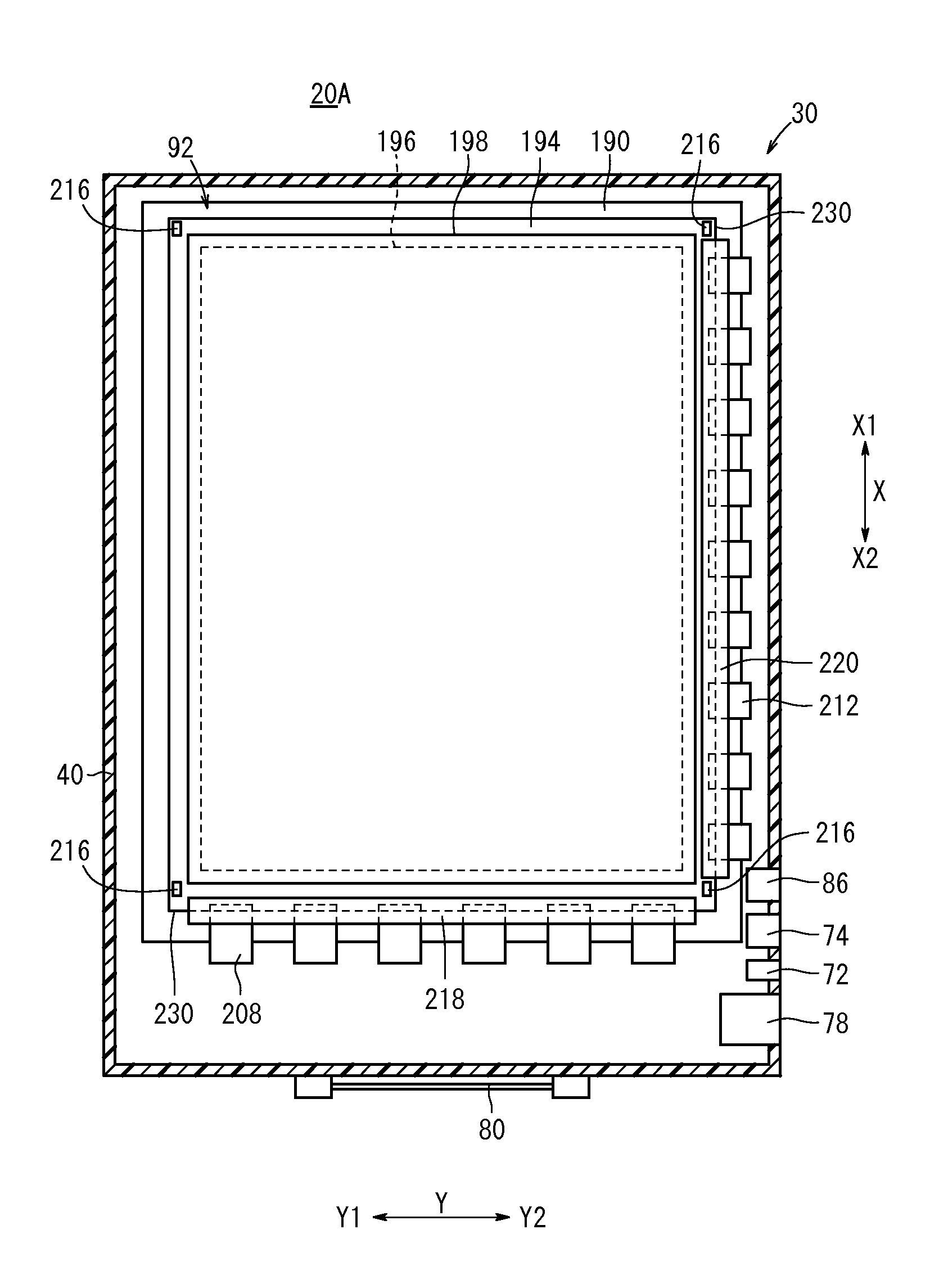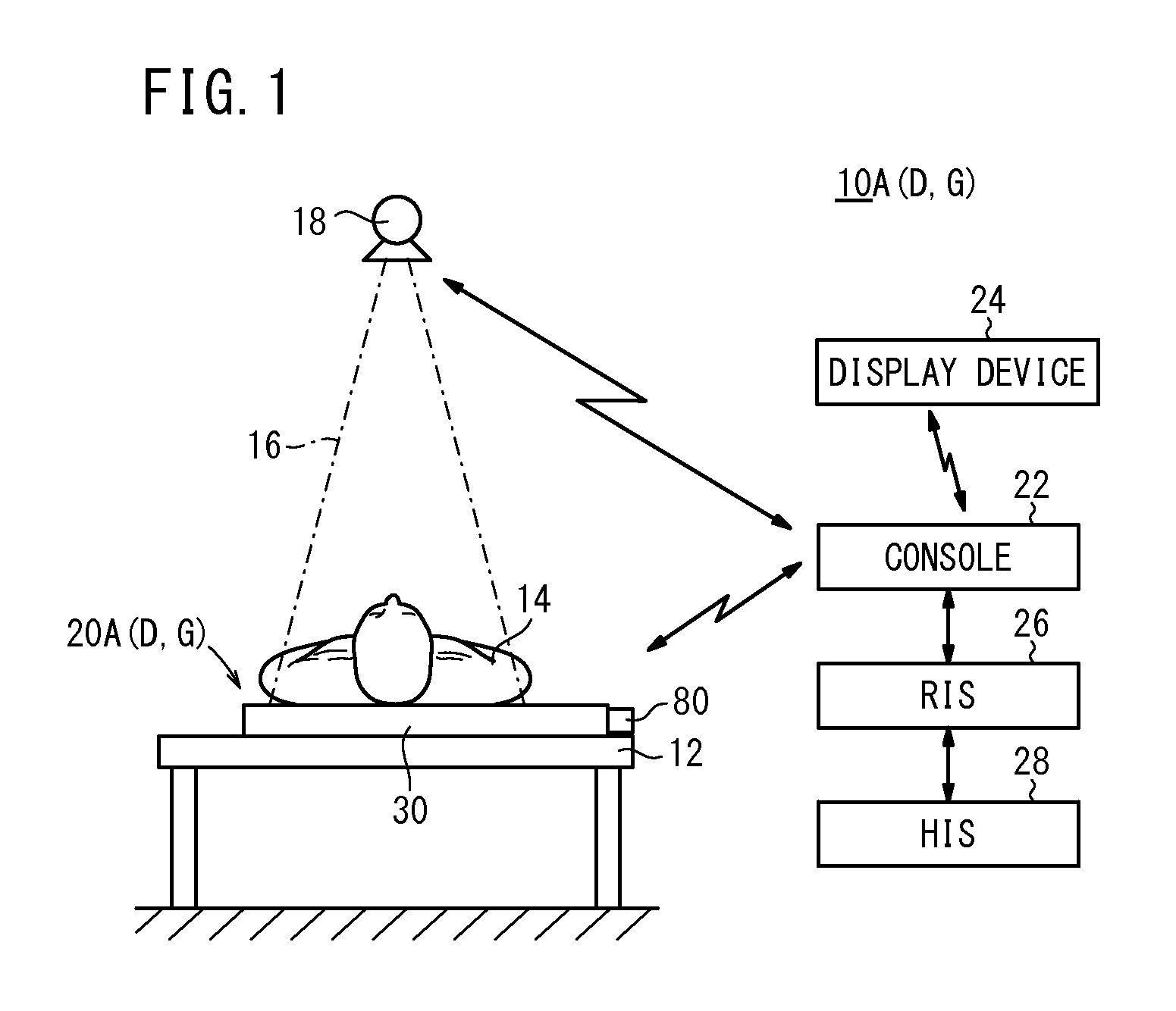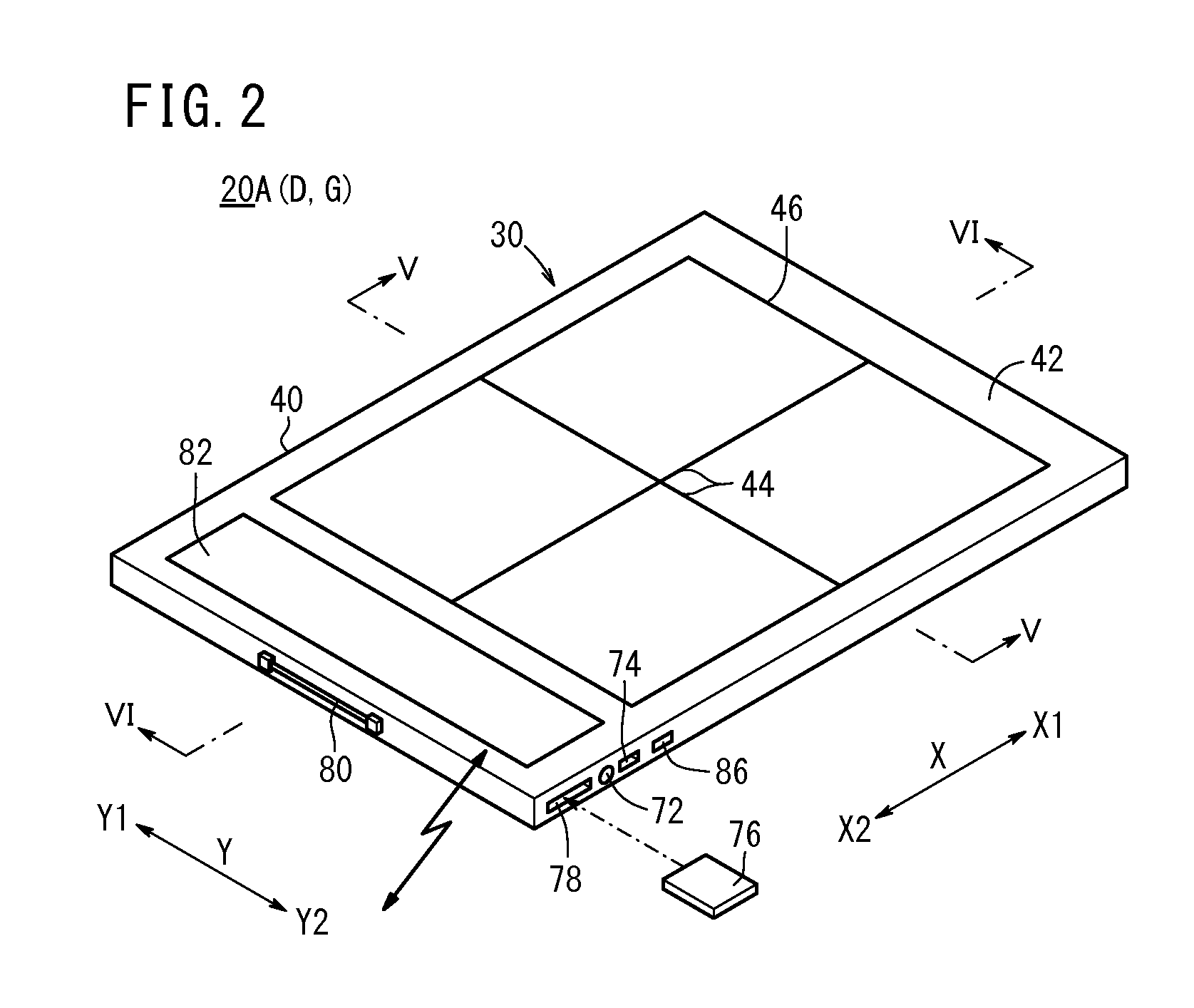Radiation imaging device, radiation imaging system, and method for affixing radiation conversion panel in radiation imaging device
a radiation imaging and radiation imaging technology, applied in the direction of radiation controlled devices, optical radiation measurement, instruments, etc., can solve the problems of radiation conversion panel cracking or peeling, assembly cracking or peeling, plastic tends to be deformed under environmental conditions, etc., to maintain the planarity of radiation conversion panel, and prevent cracking or peeling
- Summary
- Abstract
- Description
- Claims
- Application Information
AI Technical Summary
Benefits of technology
Problems solved by technology
Method used
Image
Examples
first embodiment
[0112]FIG. 1 is a schematic view of a radiographic image capturing system incorporating a cassette according to the present invention;
[0113]FIG. 2 is a perspective view of the cassette shown in FIG. 1;
[0114]FIG. 3 is a plan view of the cassette shown in FIG. 1, with an upper wall thereof cut away;
[0115]FIG. 4 is a plan view, partially cut away, of the cassette shown in FIG. 1;
[0116]FIG. 5 is a cross-sectional view taken along line V-V of FIG. 2;
[0117]FIG. 6 is a cross-sectional view taken along line VI-VI of FIG. 2;
[0118]FIG. 7A is a view schematically showing the shape of a radiation conversion panel during a rise in temperature thereof;
[0119]FIG. 7B is a view schematically showing the shape of the radiation conversion panel during a temperature drop thereof;
[0120]FIG. 8A is a view schematically showing the position of an external force applying unit with respect to the radiation conversion panel;
[0121]FIG. 8B is a view schematically showing the manner in which the external force a...
second embodiment
[0134]FIG. 21 is a schematic view of a radiographic image capturing system incorporating a cassette according to the present invention;
[0135]FIG. 22 is a block diagram of the cassette shown in FIG. 21;
[0136]FIG. 23A is a perspective view showing the cassette in a state in which the cassette is carried;
[0137]FIG. 23B is a perspective view showing the cassette in a state in which the cassette captures a radiographic image;
[0138]FIG. 24 is a fragmentary perspective view showing the position of a flexible board on a hinge shown in FIGS. 21, 23A, and 23B;
[0139]FIG. 25 is a cross-sectional view taken along line XXV-XXV of FIG. 23B;
[0140]FIG. 26 is a cross-sectional view taken along line XXVI-XXVI of FIG. 23B;
[0141]FIG. 27 is a cross-sectional view taken along line XXVII-XXVII of FIG. 23B;
[0142]FIG. 28 is a cross-sectional view taken along line XXVIII-XXVIII of FIG. 23B;
third embodiment
[0143]FIG. 29 is a schematic view of a radiographic image capturing system incorporating a cassette according to the present invention;
[0144]FIG. 30 is a perspective view of the cassette shown in FIG. 29;
[0145]FIG. 31 is a cross-sectional view taken along line XXXI-XXXI of FIG. 30;
[0146]FIG. 32 is a cross-sectional view taken along line XXXII-XXXII of FIG. 30;
[0147]FIG. 33 is a cross-sectional view of a cassette according to a fifth modification;
[0148]FIG. 34 is a cross-sectional view of the cassette according to the fifth modification;
[0149]FIG. 35 is a cross-sectional view of a cassette according to a sixth modification;
[0150]FIG. 36 is a cross-sectional view of the cassette according to the sixth modification;
PUM
 Login to View More
Login to View More Abstract
Description
Claims
Application Information
 Login to View More
Login to View More - R&D
- Intellectual Property
- Life Sciences
- Materials
- Tech Scout
- Unparalleled Data Quality
- Higher Quality Content
- 60% Fewer Hallucinations
Browse by: Latest US Patents, China's latest patents, Technical Efficacy Thesaurus, Application Domain, Technology Topic, Popular Technical Reports.
© 2025 PatSnap. All rights reserved.Legal|Privacy policy|Modern Slavery Act Transparency Statement|Sitemap|About US| Contact US: help@patsnap.com



